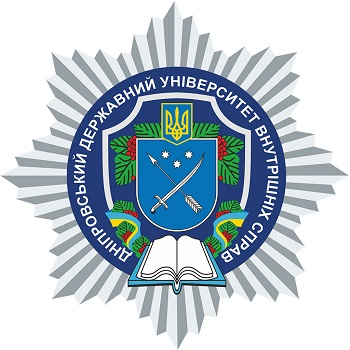SCIENTIFIC CONTROVERSY REGARDING TYPICAL INVESTIGATIVE SITUATIONS IN THE INVESTIGATION OF HUMAN TRAFFICKING COMMITTED UNDER ARMED CONFLICTS
DOI:
https://doi.org/10.31733/2078-3566-2023-6-276-281Keywords:
human trafficking, armed conflict, investigation, law enforcement agencies, typical investigative situation, trafficking.Abstract
Typical investigative situations of the investigation of human trafficking, which is committed in the conditions of armed conflicts, have been studied. It is noted that typical investigative situations have always been considered one of the most important and necessary components of the methodology of investigating criminal offenses. And this is understandable, because, firstly, they solve a number of important tasks of any criminal proceeding (planning, sequence of individual procedural actions), and, secondly, they allow you to immediately put forward versions regarding the event of an illegal act or the person of the offender. It was found that in the majority of cases, information about the fact of human trafficking in the context of armed conflicts was received by law enforcement agencies from citizens who are relatives or acquaintances of the victims (57 %) or from citizens who received information about the committed illegal act or became its witnesses (15 %). It has been established that the problem of human trafficking is reflected in various concepts, among which is trafficking. It was determined that after a full-scale military invasion, it is worth specifying such a factor that affects the active commission of human trafficking, as an armed conflict under martial law. After all, this factor affects the creation of new victimogenic groups and opportunities for trafficking in Ukraine Based on the study of the materials of criminal proceedings, the following typical investigative situations of the initial stage of the investigation were singled out: law enforcement agencies received information about the fact of committing human trafficking in the context of armed conflicts, available information about the victims, the circumstances of the event and the suspects have not been established; law enforcement agencies received information about the fact of human trafficking in the context of armed conflicts, available information about the victims, as well as about the circumstances of the event and the suspects; law enforcement agencies established the fact of human trafficking in the context of armed conflicts in connection with the conduct of procedural actions, the circumstances of the event and the victims were clarified, the suspects have not been identified; law enforcement agencies established the fact of human trafficking in the context of armed conflicts in connection with the conduct of procedural actions, the circumstances of the event, victims and suspects were clarified.
References
1. Ботнаренко І. А. Типові слідчі ситуації при розслідуванні торгівлі людьми. Сучасні тенденції розвитку криміналістики та кримінального процесу (до 100-річчя від дня народження професора М. В. Салтевського) : матеріали Міжнародної наук.-практ. конференції (м. Харків, 08 листопада 2017 р.). Харків : Харків. нац. ун-т внутр. справ, 2017. С. 55–57.
2. Горбасенко П. В. Загальна характеристика розслідування торгівлі людьми : автореф. дис. на здоб. наук. ст. канд. юр. наук : 12.00.09. Відкритий міжнародний університет розвитку людини «Україна». Київ, 2013. 22 с.
3. Грищенко С. В. Протидія торгівлі людьми : навчальний посібник. Чернігів : Видавець Лозовий В. М., 2015. 224 с.
4. Дорохiна Ю. А. «Трафікінг» – проблема сучасного суспільства. Протидія незаконній міграції та торгівлі людьми : матеріали III Міжнародного науково-практичного симпозіуму (м. Івано-Франківськ, 12-13 квітня 2019 року). Івано-Франківськ : Редакційно-видавничий відділ Університету Короля Данила, 2019. С. 46–48.
5. Котова В. В. Особливості розслідування торгівлі людьми в умовах воєнного стану. Українська поліцеїстика : теорія, законодавство, практика. 2022. № 1 (3). С. 74–81.
6. Методика розслідування торгівлі людьми : альбом схем / О. В. Захарова та інші. Львів : ЛьвДУВС, 2019. 112 с.
7. Пясковський В. В. Методика розслідування торгівлі людьми : дис. на здоб. наук. ст. канд. юр. наук : 12.00.09 / Національна академія внутрішніх справ України. Київ, 2004. 225 с.
8. Скрябін О. М. Особливості розслідування злочинів у сфері торгівлі людьми у кримінальному судочинстві. Право та державне управління. 2020. № 4. С. 134-138.
9. Тичина Д. М. Особливості методики розслідування торгівлі дітьми або іншої незаконної угоди щодо дитини. Правовий часопис Донбасу . 2022. № 1 (78). С. 177–185.
10. Фарима М. М. Розслідування торгівлі дітьми або іншої незаконної угоди щодо дитини : дис. … канд. юрид. наук : 12.00.09. Київ, 2021. 268 с.

